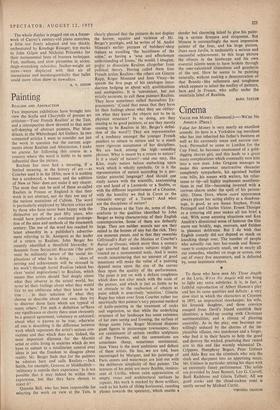Ballet
THE Festival Ballet gave the second of this season's novelties on August 8, when it pre- sented a fresh production of Harald Lander's Etudes, previously danced only by Copen- hagen and Paris companies. In nearly every- thing it is an absolute opposite to the other premiere of this season, Mlle Fifi; it is an index of what constitutes 'taste' that two so dis- similar pieces both hear the label of ballet.
Mlle Fifi is meant to . be no• more than a vehicle for its star, Alexandra Danilova; its corny but acceptable story shows her as a circus artiste receiving the favours of two suitors—who happen to be father and son. Mme. Danilova twinkled, bounced, ogled and ripped away with the part in a manner to turn any twenty-year-old danseuse green with envy of her precision, timing and subtlety of gesture.. Michael Maule and Anton Dolin played the rake and the roué with verve; only Zachary Solov's choreography lacked both precision and decision, so that tree episode turned out to be a novel but tasteless interpre- tation of the droit de seigneur.
Etudes is the very bones and muscle of pure classicism; in a forty-minute parade of danc- ing, the performers run the whole gamut from the seven-year-old's first lesson (basic foot positions) to a sizzling display of muscle- cracking feats only possible to a fully fledged, perfectly trained dancer. Some prun- ing would give point to the climactic virtu- osities which fill the ten-minutc finale; but it was heartening to see the entire company enjoying themselves after the dull routinecring they have to wade through in most of the repertoire. The whole display is pegged out on a frame- work of Czerny's century-old piano exercises, a little too freely adapted and too thickly orchestrated by Knudage Riisager; top marks to John Gilpin and Nicholai Polajenko for their monumental feats of bravura technique. Fast, medium, and slow pirouettes in series; thigh-wrenching cabrioles; feather-weight air turns—were displayed with that air of insouciance and inconsequentiality that ballet could more often show us nowadays.
A. V. COTON



































 Previous page
Previous page